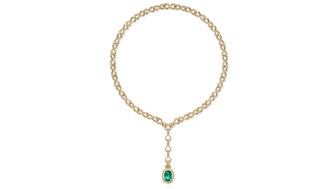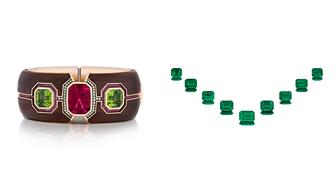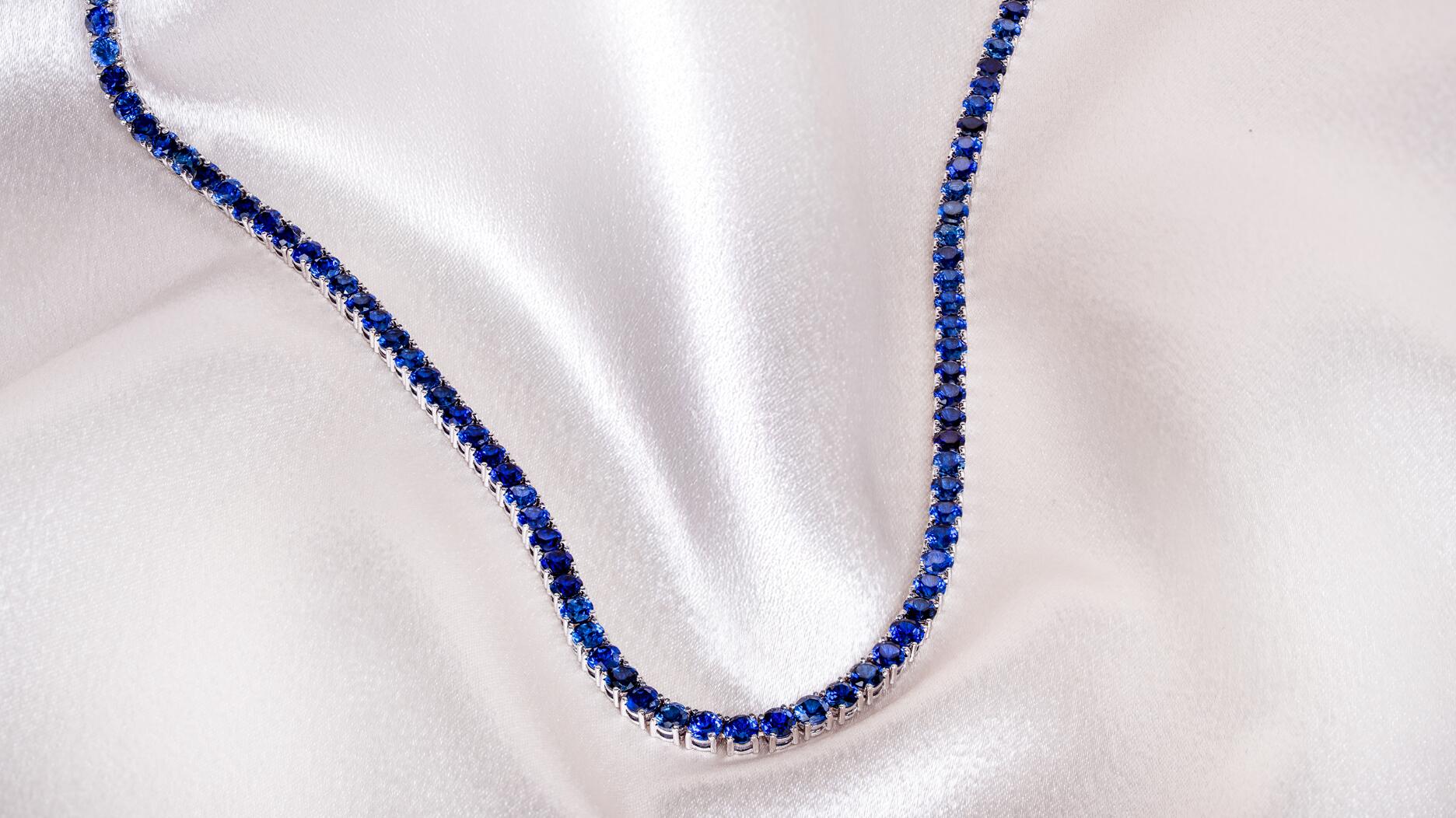Amber Pepper’s main focus will be on digital innovation and engaging younger consumers.
Analysis: Light’s Out at Signet
Editor-in-Chief Michelle Graff breaks down the chain of events that led to the departure of Signet Jewelers CEO Mark Light.

Shortly after Signet’s March earnings call, I was on the phone with an industry colleague who said he believed that Mark Light’s days at the helm of the nearly $6 billion jewelry store chain were numbered.
His evidence: board Chairman Todd Stitzer’s backing of Light during the call. A member of any board indicating that the CEO’s job is secure, my colleague rightly observed, is generally a sign that it’s not.
So it wasn’t a shock when the news broke Monday morning that the 55-year-old Light would be retiring at the end of the month due to “health reasons,” with a company spokesman telling National Jeweler via email on Wednesday that while Light’s condition is not life-threatening, he has been hospitalized and has had a couple of “surgical procedures.”
There’s a lot to unpack surrounding the departure of Light, who spent his entire career at Signet, following in the footsteps of his father, Nate.
First, let’s start with Signet’s recent financial performance.
The company has seen comps fall for the last four quarters, and its performance this past holiday season was described as “disappointing” by management, with same-store sales down 5 percent in November and December.
Signet’s struggle with in-store sales is understandable, for a couple of reasons.
Number one, the company’s target demographic, the American middle class, has seen its buying power diminish.
RELATED CONTENT: Middle class problemsNumber two, the majority of Signet’s stores are located in malls, which are struggling to survive, particularly those that cater to middle-income Americans. At the close of 2017, the company had a little over 2,800 Kay, Jared, Zales and Piercing Pagoda stores in the United States and Puerto Rico. Of those, 1,955, or about 70 percent, were located in malls.
But what was perhaps more concerning this past holiday season was online performance. At a time when online sales can be a bright spot for brick-and-mortar retailers, Signet’s e-commerce sales slid 3 percent because, the company said, it had technical problems with some of its websites.
So you have a retailer with an eroded customer base, a lot of stores in the wrong places and websites that don’t work very well in an age when e-commerce is important as ever.
Then, you throw in a couple of huge public relations messes and questions from investors about your credit program (which Signet is now going to outsource), and it’s not hard to see why this massive chain
The most recent of these messes was The Washington Post’s February story detailing 1,309 pages of sworn statements from former male and female employees who told of a culture where women were discriminated against and sexually harassed.
Here’s the background on this story.
The declarations were part of an ongoing class-action arbitration first filed in 2008 in which female employees accuse the company of pay and promotion discrimination. The arbitration is ongoing and set to go to trial in March 2018.
Now--and Signet has emphasized this point over and over again--there are no claims of sexual harassment in the arbitration.
But the documents the Post reported on earlier this year were filed as part of the case; they had just been under wraps for years.
One of the stipulations of their release was that the names of any specific individuals accused of harassing conduct be redacted because they were not parties to the litigation. Yet there was one name mentioned in Post story--Light’s.
The Post cited a 2013 memorandum filed by the attorneys who represent the women in the pay and promotion discrimination class-action arbitration in which Light, along with a few other executives, are accused of creating a culture were women feel devalued and compelled to acquiesce to sexual advances in order to succeed, and for having sex with female employees.
The story garnered more than 700 comments and was widely covered, not only by the trade but also the consumer media, outlets like USA Today and NBC Nightly News.
A little more than a week after the Post story ran, Signet had its fourth quarter results conference call and Stitzer took the reins from Light, something I can’t recall happening in the nearly 10 years I’ve been covering the company.
For the first 26 minutes of what turned out to be an hour-and-15-minute-long call, Stitzer was on clean-up duty. He ran down the list of issues currently confronting the company, starting with the bombshell Post story, then credit issues and the allegations of stone-swapping at Kay stores.
This is also the call where, as I mentioned above, he pledged the board’s support for Light and the executive management team.
But Stitzer also said this: “Our board is very focused on management’s performance. During the course of a very challenging year, the board and I have become much more actively involved with the business, and we’ll continue this enhanced level of involvement.”
So it’s not at all surprising that the individual picked to succeed Light, Virginia C. Drosos, is a member of the board and not from Signet’s current, and now very much changed, upper ranks.
The Latest

Called “Origin by De Beers Group,” the loose, polished diamonds are being sold in a total of 30 stores in the United States and Canada.

The lariat necklace features a 4.88-carat oval-cut Zambian emerald in 18-karat yellow gold.

How Jewelers of America’s 20 Under 40 are leading to ensure a brighter future for the jewelry industry.

A 43-carat sapphire brooch from the Vanderbilt collection was the top lot of the Geneva sale.


Rau is a fourth-generation art and antique dealer from M.S. Rau gallery whose first jewelry collection merges artifacts with modern design.

Former De Beers sustainability leader Purvi Shah will take over the role in February 2026.

Roseco’s 704-page catalog showcases new lab-grown diamonds, findings, tools & more—available in print or interactive digital editions.
La Joux-Perret is based in La Chaux-de-Fonds, Switzerland, and makes solar quartz as well as mechanical watch movements.

She previously taught at Gem-A and is the founder of The Gem Academy.

The British actress and her daughter modeled pieces from the brand’s new “Palette” capsule for its “Once Upon a Time” holiday campaign.

Plus, the tech giant shares the steps retailers should take if they believe they’re a victim of a review extortion scam.

Danny and Gaby Shaftel are now Shaftel Diamonds’ CEO and chief operating officer, respectively.

The jewelry manufacturer’s seasonal offering features its new “Melodie” bangles, as well as mini stud earrings and layering pieces.

With more than 140 activations taking place in New York City now through Nov. 23, these 12 events are can’t-miss moments.

The Chapter 11 filing follows the resignation of CEO Moti Ferder, who stepped down after an investigation into the company’s finances.

The artwork is part of an exhibition featuring works by Kathleen Ryan, an artist known for her gemstone-studded rotting fruit sculptures.

Mark Wall, president and CEO of Canadian mining company Mountain Province Diamonds, will vacate his position next month.

Faustino Alamo Dominguez and his son, 25-year-old Luis Angel Alamo, were gunned down following an armed robbery at their jewelry store.

Tiffany & Co. veteran Jeffrey Bennett has stepped into the role.

The showroom is located in a historic 1920s building in the Playhouse District.

The Swiss government announced the deal, which cuts the tax on Swiss imports by more than half, on social media Friday morning.

A buyer paid $4.4 million for the piece, which Napoleon wore on his hat for special occasions and left behind when he fled Waterloo.

Plus, how tariffs and the rising price of gold are affecting its watch and jewelry brands.

Furmanovich designed the box to hold Mellerio’s “Color Queen,” a high jewelry collection consisting of 10 rings.

Jennifer Hopf, who has been with JCK since 2022, will lead the execution of the long-running jewelry trade show.

Adler’s Jewelry is set to close its two stores as 82-year-old owner Coleman E. Adler II retires.


























